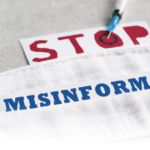When it comes to billing, there are plenty of myths and erroneous sayings used by consultants and payers to keep you guessing and make your head spin. Billing seems endlessly mystical, and it is important that physician practices stay as informed as possible to be effective and efficient. With today’s financial situation, it is even more important that rheumatology practices know the rules of billing—This will save you time and money in the long run.
This month, the ACR’s certified professional coder, Melesia Tillman, CPC, CCP, identifies and dispels five billing myths.
Myth: You must have a different diagnosis in order to bill for an evaluation and management service and a procedure on the same date of service.
Truth: This myth has been around so long that even some carriers believe it. It clearly states in the CPT manual that, “The E/M service may be prompted by the symptom or condition for which the procedure and/or service was provided. As such, different diagnoses are not required for reporting of the E/M services on the same date.”
Myth: Avoid billing too many level-four or -five office visits to keep the OIG from auditing your claims.
Truth: In reality, this is a form of fraudulent coding. It is just as wrong to undercode as it is to overcode. Also, by doing this you are hurting your fellow rheumatologists in your area. This unfairly labels your peers who are coding correctly as outliers.
Myth: If Medicare pays for a service, and you get reimbursed for it, you must be billing correctly.
Truth: Medicare is famous for paying for non-allowed services. They have the right to go back and audit claims as far back as three years. This frequently happens because many simple claims are paid by an automated system and, if that code has not been flagged in their system, it will go unchecked until they audit themselves.
Myth: There is no need to return any money until the carrier requests it.
Truth: To Medicare, the difference between fraud and abuse is the intent. If it is determined to be abuse, a simple repayment of the funds is requested. If it is determined to be fraud, a practice could face could face fines up to $10,000 per line item. It is always better for the practice to identify the error and fix it rather than allowing the carrier find it.

